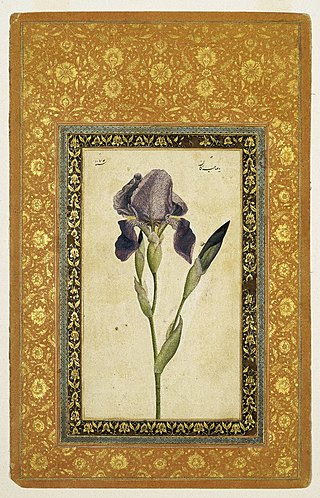Top Qs
Timeline
Chat
Perspective
Mohammad Zaman
17th century Iranian painter and illuminator From Wikipedia, the free encyclopedia
Remove ads
Muhammad Zaman ibn Haji Yusuf Qumi, known as Mohammad Zaman (fl. 1650 – c. 1700),[1] was a famous Safavid calligrapher and painter.


Remove ads
Life
While it has previously been claimed that the painter Mohammad Zaman was born in Kerman, Persia to Haji Yusuf, and received his education in Tabriz by Nicholas Martinovich and Fredrik Martin, it is likely that they mixed up the painter with another man with the same name.[2] The date and place of birth of the Safavid painter Mohammad Zaman remain unknown.[3] Similarly, the claim that he was sent by Shah Abbas II of Persia to Rome to study Italian painting, and there he converted to Christianity cannot be confirmed. The Persian paintings signed or attributed to Mohammad Zaman in fact reference Flemish engravings instead of Italian sources.[3] Therefore, it likely was a different man bearing the same name who converted, took the name of Paolo, and was forced to flee to India because of his conversion to Christianity.[4]
The artist Mohammad Zaman made paintings for manuscripts such as Nizami's Khamsa or the Shahnameh as well as some paintings with European subject matter. Furthermore, he was influential in training several other painters, including Mohammad-Ali and Mohammad-Ebrahim.[4]
Remove ads
Notable works
Summarize
Perspective

Six of his paintings from 1678 to 1689 were of Biblical scenes. A painting of Judith with the severed head of Holofernes, currently in the Khalili Collection of Islamic Art, is signed "Ya sahib al-zaman", one of the titles of the 12th Shia Imam, Muhammad al-Mahdi. Mohammad Zaman used this phrase in place of a signature, and on that basis the painting is attributed to him.[17][18]
Farangi-Sazi
Mohammad Zaman favored night scenes, and his work combined multiple influences, drawing subjects from European paintings but with Mughal or Kashmiri stylistic touches.[17] He introduced a European style to Safavid painting in manuscripts known as farangi-sazi.[19] This style combines Persian iconography and compositional elements with more European elements, such as chiaroscuro, atmospheric effect, and “Western” perspective. The style could also be seen in his forest scenes, which include exaggerated forms, heavy contrasts between light and dark, and picturesque mountains and streams.[10]
Contributions to the Khamsa of Nizami
The Khamsa of Nizami, a manuscript of five poems by poet Nizami Ganjavi, is known for its Safavid illustrations—three of which are attributed to Mohammad Zaman. It has been suggested that he produced these paintings in the 17th century as additions to the original manuscript. It is also suggested that the paintings by Mohammad Zaman were inserted in the Khamsa of Nizami after being removed from somewhere else, as there is some damage to the upper sections. His signature and the date inscription can be found on two of the paintings, however all three resemble another painting attributed to Mohammad Zaman, "Majnun in the Wilderness."[20]
Mohammad Zaman's depiction of the tale of Bahram Gur and the Indian Princess features wingless faeries, different from other depictions of the scene. The text adjacent to the image is a section of the Tale of the Indian Princess, which ends with a description of food and wine for a banquet in the King and Queen's pavilion. However, Mohammad Zaman's depiction does not include this pavilion scene, instead depicting King Turktazi and the Queen of the Faeries.[10]
Some of his notable students include 'Ali Ashraf.[21]
Remove ads
References
Sources
External links
Wikiwand - on
Seamless Wikipedia browsing. On steroids.
Remove ads
